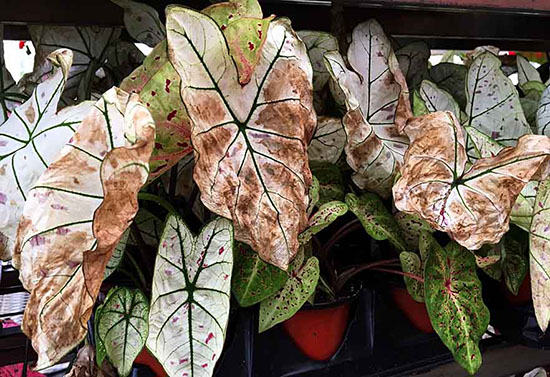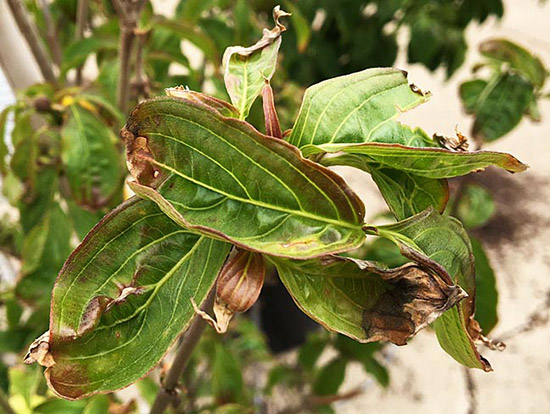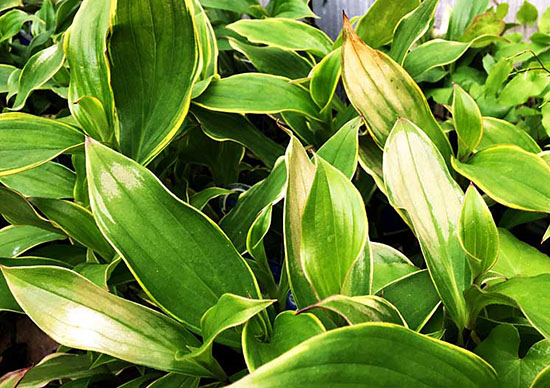Issue 3, May 15, 2017
Weather Injury to Plants
Illinois has experienced some interesting weather the last couple of months. March and early April seemed like late spring or early summer. The last couple of weeks have felt more like early spring. Rainfall amounts have hit the double digits for the week ending May 6th in some parts of the state. Needless to say, plants are as confused as we are.
Many plants were actively growing when a cold spell hit several weeks ago, including frost in some areas of the state. With frost, our initial worry centered on the blooming fruit plants, particularly the peaches and strawberries. With strawberries, some of the initial blossoms turned dark, but subsequent blooms haven't been affected. Older leaves may appear red and/or scorched along their leaf margins. There seems to have been no effect on peach trees, which barring disease and insect problems, should signal a good crop.
Cold can affect plants differently. In some cases, the plant is killed outright. This usually happens with annual vegetables and flowers that weren't acclimated and were planted early based on the weather, and not on the calendar. Fortunately, we can still re-seed or replant.
On other plants, new, expanding growth may become distorted, twisted or stunted, looking almost like chemical injury, but lacking the uniformity that chemical injury usually shows. Subsequent growth is usually normal. Leaves can remain distorted until autumn. This has occurred on many perennials from daylilies to hosta, but on the older, lower leaves.
Cold injury can discolor the tissue, either causing leaves to look yellowish, or bleaching the leaves completely white. This occurs due to the destruction of chlorophyll and other pigments. Another cause may be ice crystals forming between the cells, rupturing the membranes. In either case, the damaged tissue seldom recovers, and the leaves will eventually drop. The plant may or may not continue growing. In some cases, the plant may recover so slowly and be so prone to other problems that it might make sense to replant. However, trees, shrubs and perennials typically recover when new growth occurs.

Cold injury to Caladium.

Cold injury to dogwood.

Cold injury to hosta.
It should be noted that many trees and shrubs possess secondary and tertiary buds to allow for regrowth if all the foliage is damaged. However, this lowers the plant's food reserves. When this occurs, care must be given to make sure plants aren't under additional stress throughout the growing season. It may take several growing seasons for the plant to recover lost food reserves.
On the plus side, cold injury could destroy some of the flowers on many shade trees, resulting in less seed production. Unlike colorful flowers that turn dark when hit by cold temperatures, you seldom see the injury of shade tree seed production simply because it doesn't stand out.
Cold, coupled with wet conditions, can also lead to problems with root injury, especially with warm loving plants such as tomatoes, peppers, petunias, marigolds and other annuals. Root and stem rots usually occur, and plants tend to fall over and die.
For most cold injury, the best approach is to wait-and-see. Be prepared to replant some tender bedding and vegetable plants. Look for the bleaching and discoloration in leaves, but also notice any new growth. (David Robson)
Author:
David Robson